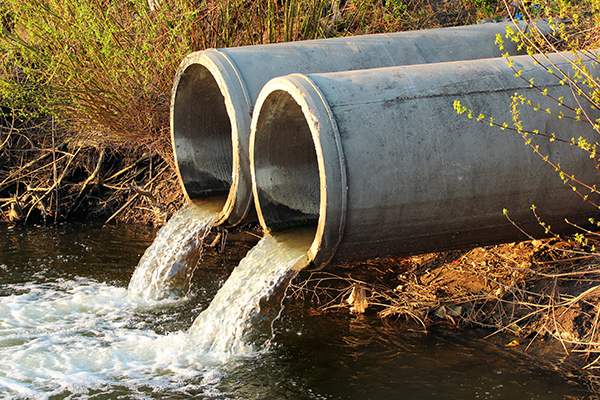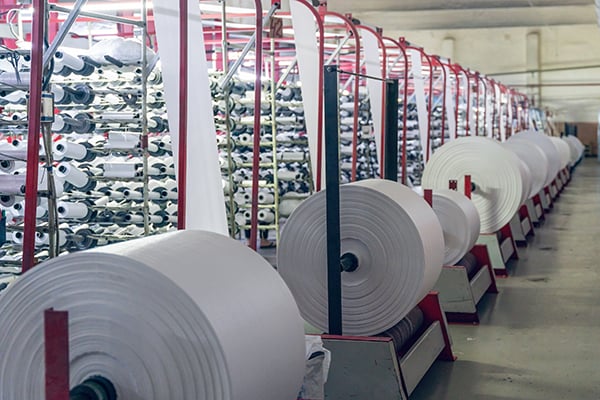Mike Deible, Ph.D. 10 min read
Innovations in PFAS-Free Manufacturing
Contributors
Mike Deible, Ph.D.
Subscribe to our newsletter
The Environmental Impact of PFAS Chemicals
Introduction
PFAS chemicals, also known as 'forever chemicals,' have raised significant concerns due to their persistence in the environment and potential health risks. These chemicals can contaminate water sources, soil, and air, leading to long-lasting environmental damage.
Studies have linked PFAS exposure to various health issues, including cancer, immune system disorders, and developmental delays. Recognizing the environmental impact of PFAS chemicals is crucial in driving the shift towards PFAS-free manufacturing.
Advancements in PFAS-Free Materials
In recent years, significant advancements have been made in developing PFAS-free materials as alternatives to traditional PFAS-containing products. Manufacturers are now utilizing innovative formulations that provide similar performance without the harmful effects of PFAS chemicals.
-
Silicone: Silicone-based materials can provide similar properties to PFAS without the environmental and health risks. Silicone is used in various applications such as non-stick coatings, food packaging, and textiles.
-
 Fluorine-Free Durable Water Repellents (DWRs): DWRs are commonly used in outdoor clothing and gear to provide water resistance. Fluorine-free alternatives, which use different chemistry than PFAS-based DWRs, are becoming more prevalent.
Fluorine-Free Durable Water Repellents (DWRs): DWRs are commonly used in outdoor clothing and gear to provide water resistance. Fluorine-free alternatives, which use different chemistry than PFAS-based DWRs, are becoming more prevalent. -
Bio-Based Materials: Manufacturers are exploring bio-based alternatives derived from renewable sources like plant oils or animal fats. These materials offer similar functionalities to PFAS but without the associated environmental persistence.
-
Hydrocarbon-Based Materials: Hydrocarbon-based materials, such as paraffin wax, are being utilized as alternatives in some applications where PFAS were previously used.
-
Polyurethane Coatings: Polyurethane coatings can offer water and stain resistance without relying on PFAS chemistry. These coatings are used in various consumer products like furniture, footwear, and electronics.
-
Inorganic Materials: Some inorganic compounds, such as silica nanoparticles, are being researched as alternatives for applications like coatings and surface treatments.
-
 Textile Finishes: Innovations in textile finishing processes are leading to the development of PFAS-free alternatives for waterproofing and stain resistance in fabrics.
Textile Finishes: Innovations in textile finishing processes are leading to the development of PFAS-free alternatives for waterproofing and stain resistance in fabrics. -
Water-Based Coatings: Water-based coatings are being developed to replace solvent-based coatings containing PFAS. These coatings can provide similar performance without the use of harmful chemicals.
Innovative Technologies for PFAS-Free Manufacturing
In addition to removing PFAS-containing materials from finished good, manufacturers are also working to ensure that these substances are not transferred to products from the manufacturing process, or entering the environment in the form of manufacturing waste.
Companies are investing in research and development to create cutting-edge solutions that ensure product quality while adhering to strict environmental standards, driving the adoption of PFAS-free manufacturing practices.
- Process Optimization: Manufacturers are optimizing their production processes to reduce the use of PFAS-containing chemicals or to prevent their release into the environment. This may involve refining manufacturing techniques to minimize the generation of PFAS-containing byproducts or waste.
-
Enhanced Monitoring and Control Systems: Implementing more stringent monitoring and control systems within manufacturing facilities can help detect and prevent the unintended release of PFAS into products or the environment. This includes implementing advanced sensors and analytical techniques to detect trace levels of PFAS and implementing control measures to contain them.
-
Investment in Safer Technologies: Manufacturers are investing in research and development of safer technologies and production methods that do not rely on PFAS. This includes exploring alternative materials, coatings, and processes that achieve similar performance without the use of PFAS.
-
Improved Waste Management Practices: Proper management of waste streams generated during production processes is crucial to prevent the release of PFAS into the environment. Manufacturers are implementing more effective waste management practices, such as advanced treatment methods or recycling technologies, to minimize the environmental impact of PFAS-containing waste.

-
Regulatory Compliance and Certification: Manufacturers are ensuring compliance with regulations related to PFAS use and implementing certification programs to demonstrate their commitment to producing PFAS-free products. This may involve obtaining certifications from third-party organizations that verify the absence of PFAS in their products.
-
Collaboration and Information Sharing: Collaboration among manufacturers, industry associations, regulators, and researchers is essential to share knowledge, best practices, and technological advancements for reducing PFAS use and emissions across the supply chain.

Conclusion
As manufacturers embrace ongoing innovation and embrace novel materials and technologies, they are actively addressing the challenges posed by PFAS, safeguarding both public health and the environment.
With a commitment to environmental stewardship, RJ Lee Group collaborates with manufacturers to identify the origins, types, and levels of PFAS in their supply chains, manufacturing processes, waste streams, and final products. Our expertise extends to advising on material choices for enhanced water resistance, durability, and corrosion protection. In addition to standard lab tests compliant with EPA 533, 1637, ASTM 842, and 8535, we offer specialized testing services tailored to investigate unique media compositions. Learn how PFAS may impact your manufacturing and supply chain by contacting us for a no-obligation discovery call to discuss your needs.
Share this post



